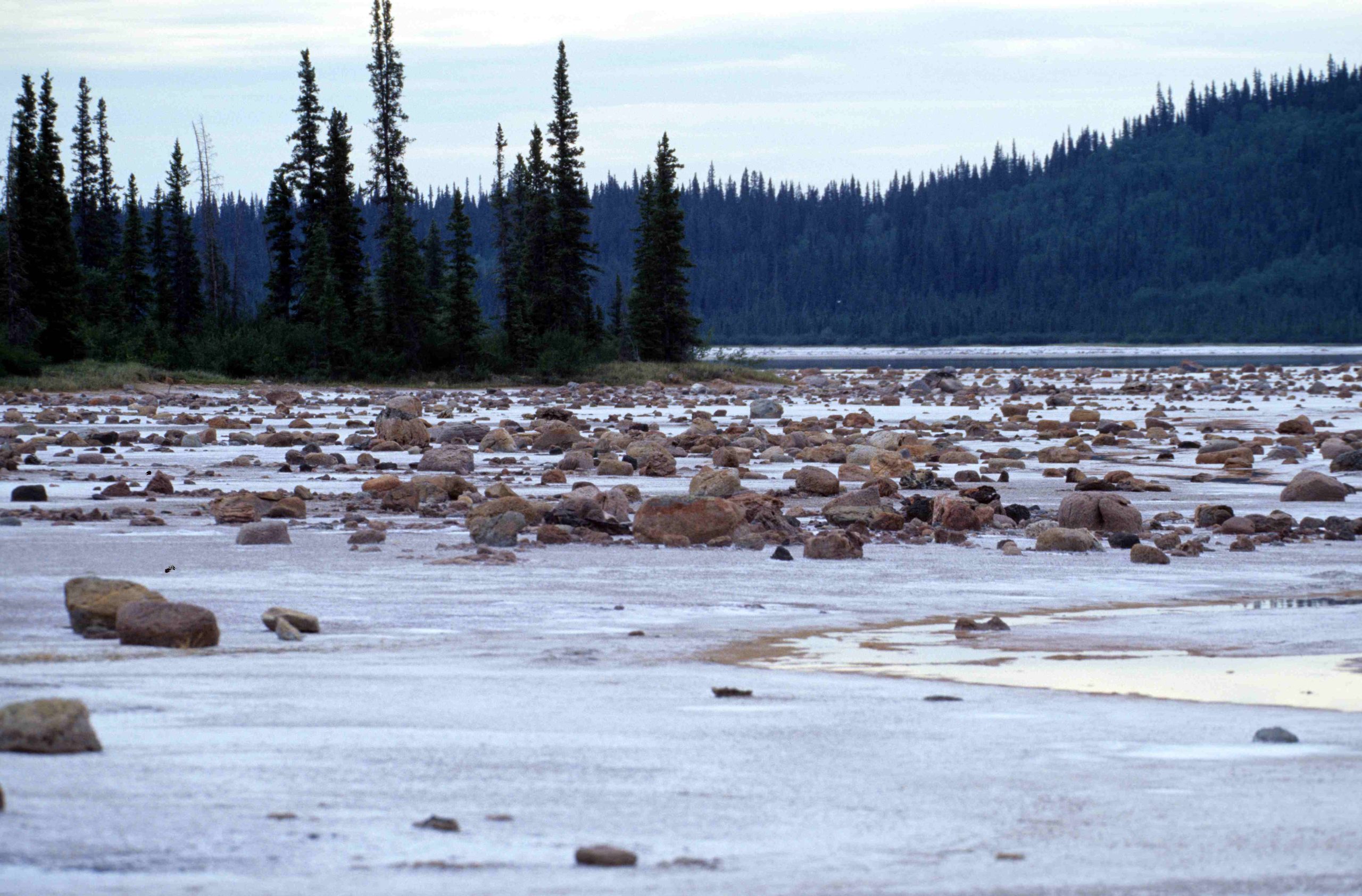If you’ve ever dreamed of escaping into untouched nature, far from crowds and city lights, there’s one place in Canada that delivers the ultimate wild experience—Wood Buffalo National Park. Located in the remote expanse of northern Alberta and the southern Northwest Territories, it is the largest national park in Canada and one of the biggest in the world. At over 44,800 square kilometers, it’s larger than Switzerland and holds secrets that only the most adventurous travelers discover.
Designated a UNESCO World Heritage Site, this massive park protects rare wildlife, unique geology, rich Indigenous heritage, and vast boreal ecosystems. Whether you want to spot wood bison, walk across glittering salt plains, paddle peaceful deltas, or marvel at the northern lights, Wood Buffalo offers a deeply authentic and awe-inspiring adventure. Let’s take a closer look at what makes this wild place so special.
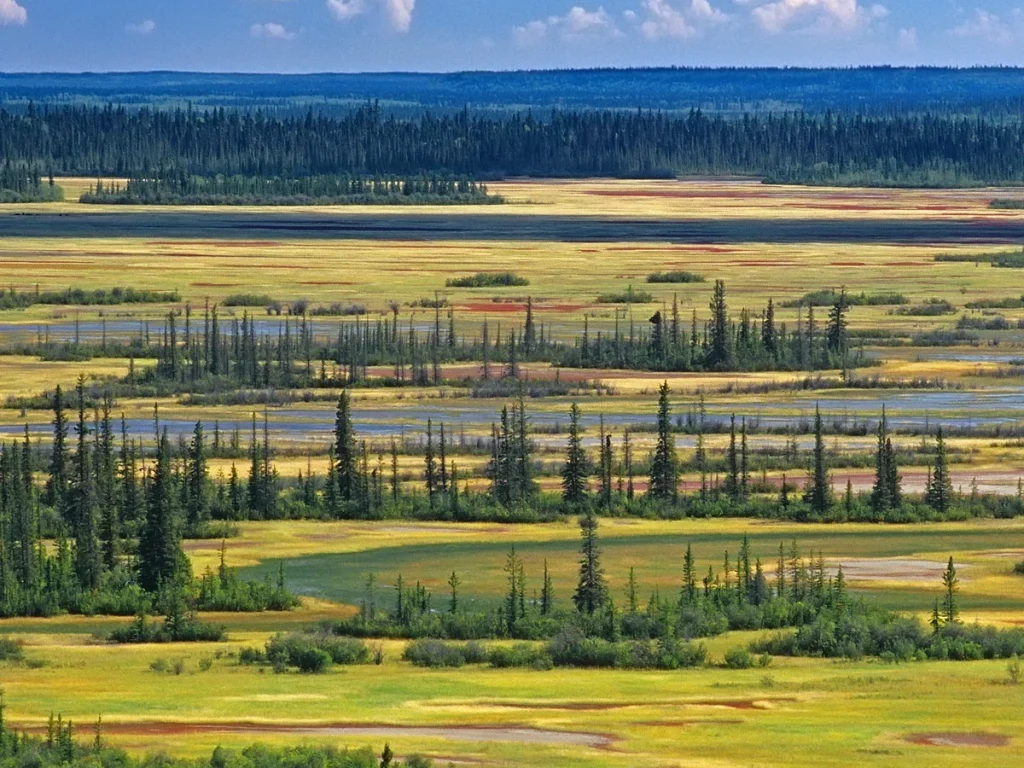
What Makes Wood Buffalo National Park So Special?

Wood Buffalo National Park isn’t just large—it’s ecologically and culturally invaluable. Established in 1922 to protect the last remaining herds of wood bison, it has since become a sanctuary for diverse wildlife, a hotspot of geological phenomena, and an important place of stewardship for Indigenous communities.
The park is home to the world’s largest free-roaming wood bison population, and it’s the only known natural nesting site of the endangered whooping crane. It also protects the Peace-Athabasca Delta, one of the largest freshwater inland deltas on Earth—a critical wetland for birds, fish, and mammals.
Equally important is the region’s human history. Indigenous peoples, including Dene and Cree nations, have lived on and cared for this land for thousands of years. Their deep connection to the ecosystem is reflected in every aspect of the park, from land use to traditional ecological knowledge.
What truly sets Wood Buffalo apart is its sense of isolation and grandeur. With vast horizons, pristine skies, and the absence of major development, this is wilderness in its purest form.
Witness Wood Bison in Their Natural Habitat
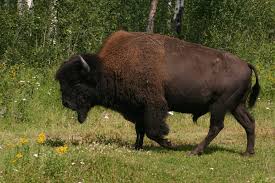
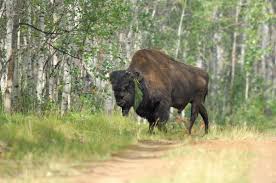
One of the main highlights of a trip to Wood Buffalo is the chance to see wood bison up close. These incredible creatures can weigh nearly a ton and are known for their large heads, shaggy coats, and majestic presence. Unlike plains bison, wood bison are better suited to northern forests and wetlands.
The Highway 5 corridor, especially near Salt River, is a great place to spot herds grazing in open meadows or crossing the road. Always observe them from a safe distance and remain in your vehicle if you’re unsure—they’re wild and unpredictable.
Bison are active year-round, but your chances of seeing them increase during spring and summer, when they move closer to the roadside in search of fresh grasses. Bring binoculars and a telephoto lens for the best viewing experience.
Explore the Surreal Salt Plains
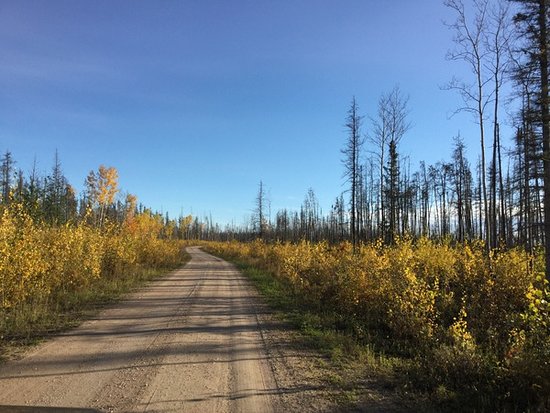
You might not expect to find a shimmering white salt desert in the middle of boreal forest, but that’s exactly what the Salt Plains deliver. These stunning white flats are the result of ancient seabeds and underground salt springs. When the mineral-rich water rises and evaporates, it leaves a crust of salt that stretches across the landscape like snow.
The best way to experience the area is via the Salt Plains Lookout Trail, a short walk that offers panoramic views of the plains and interpretive signs explaining their geological origins. You can also hike down and walk barefoot on the salt crust for a unique tactile experience.
Photographers will love the contrast of white salt, green forest, and blue sky. The best lighting is during early morning or late evening when shadows stretch across the salt and enhance its texture.
Paddle Through the Peace-Athabasca Delta
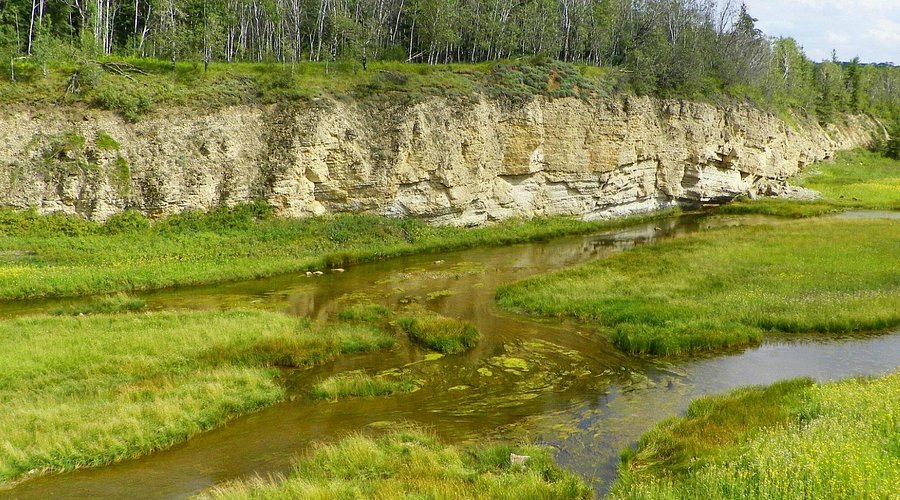
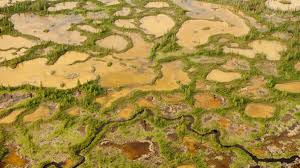
For water lovers, the Peace-Athabasca Delta is a true paradise. This expansive wetland—formed where the Peace, Athabasca, and Birch rivers meet—is one of the most important bird habitats in North America and a Ramsar-designated wetland of international importance.
Canoeing or kayaking through the delta’s network of rivers, lakes, and marshes offers an intimate way to explore its incredible biodiversity. Look out for beavers, muskrats, pelicans, loons, and—if you’re lucky—moose wading through the reeds. It’s also one of the best places to see migrating birds in spring and fall, including the rare whooping crane.
Paddlers should be experienced and prepared, as routes can be complex and remote. Consider guided tours or consult with Parks Canada before venturing into the delta independently.
Discover the Karst Sinkholes and Forest Trails
Wood Buffalo’s northern region is dotted with karst formations—a rare type of terrain created when water slowly dissolves underground limestone. This geological process forms sinkholes, disappearing streams, caves, and oddly shaped hills.
One of the most accessible ways to experience this is through the Salt River Trail System, located near Fort Smith. These trails wind through thick boreal forest, opening up to dramatic sinkholes and rocky viewpoints. Some sinkholes are filled with water, creating beautiful, deep-blue lakes surrounded by vegetation.
Hiking here is best during late spring to early fall, and the trails range from easy strolls to moderate hikes. Be sure to bring a map, water, and bear safety gear, as this area is home to black bears and other wildlife.
Watch the Northern Lights in a Dark Sky Preserve
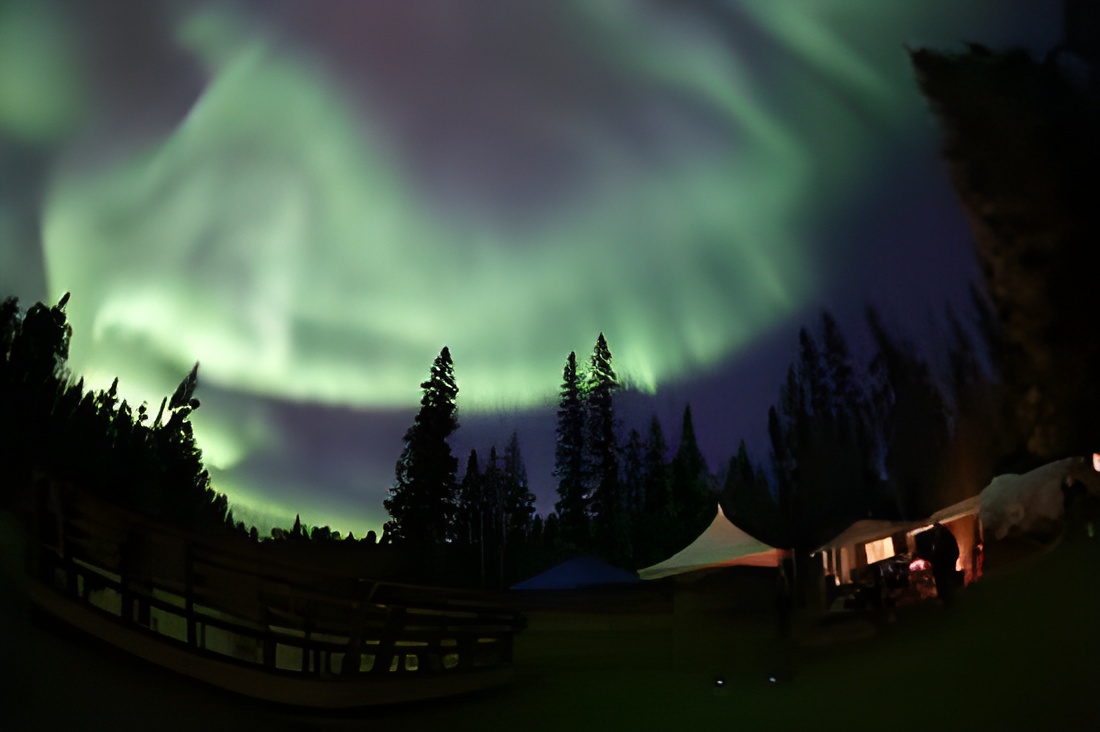
Thanks to its remote location and minimal light pollution, Wood Buffalo National Park is one of the best places in the world to see the aurora borealis (Northern Lights). In 2013, it was designated a Dark Sky Preserve by the Royal Astronomical Society of Canada, which helps protect its night skies for stargazers and researchers.
From fall to early spring, the night skies often come alive with shimmering waves of green, purple, and pink. The longer and colder the night, the better your chances of seeing them.
Some of the best aurora viewing spots include open areas near Pine Lake, Kettle Point, and the Salt Plains. Fort Smith also hosts an annual Dark Sky Festival, featuring telescope nights, photography workshops, and cultural storytelling.
For a truly magical experience, camp under the stars and watch the auroras dance above your tent.
Start Your Adventure in Fort Smith
The town of Fort Smith, Northwest Territories, is the southern gateway to Wood Buffalo National Park. It offers essential amenities like hotels, restaurants, fuel, and a hospital. It’s also home to the Park Visitor Reception Centre, where you can learn about the park’s ecology, Indigenous culture, and current conditions.
Fort Smith has a friendly, close-knit vibe and is steeped in Dene and Métis traditions. You can explore local art galleries, cultural centers, or even join a guided cultural walk or drumming circle during seasonal events.
Access to Fort Smith is via Highway 5, a mostly paved road that connects to northern Alberta. The drive is long but scenic, with good opportunities to spot wildlife.
When to Visit Wood Buffalo National Park
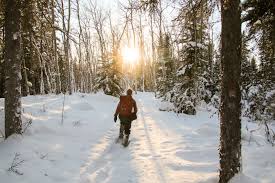
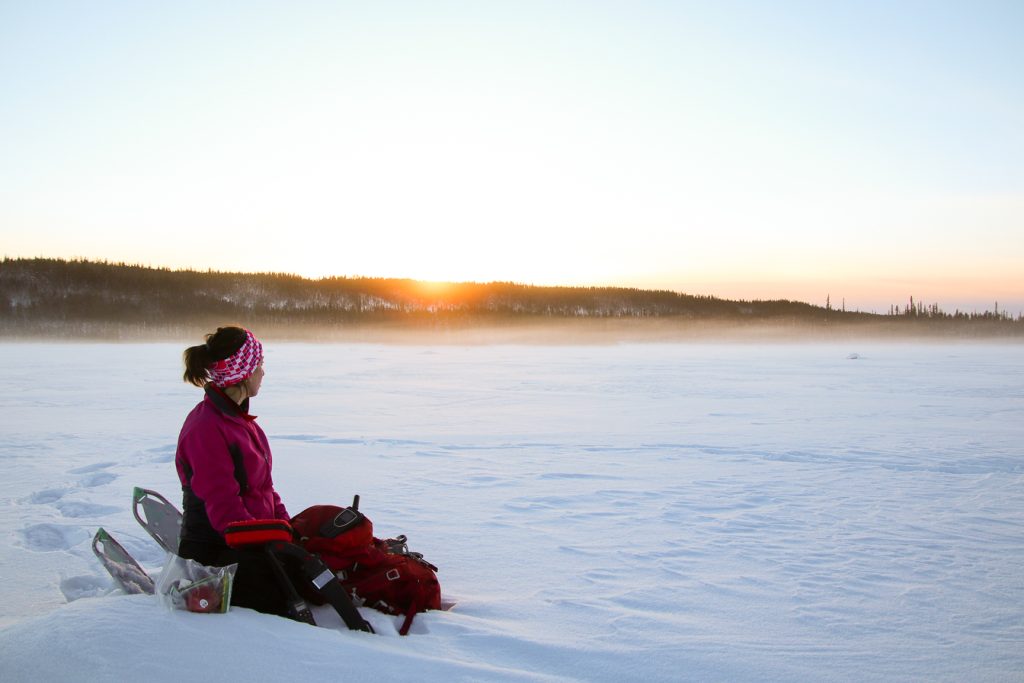
Wood Buffalo is open year-round, but your experience will differ depending on the season:
- Summer (June–August): Warm weather, long days, and great for hiking, paddling, and wildlife.
- Fall (September–October): Gorgeous colors, cooler temps, and excellent aurora viewing.
- Winter (November–March): Cold and snowy, but amazing for northern lights and solitude.
- Spring (April–May): Bird migrations and budding greenery, but trails may be muddy.
Plan well in advance, especially for camping or backcountry travel, as services are limited.
Travel Tips for Visiting Wood Buffalo
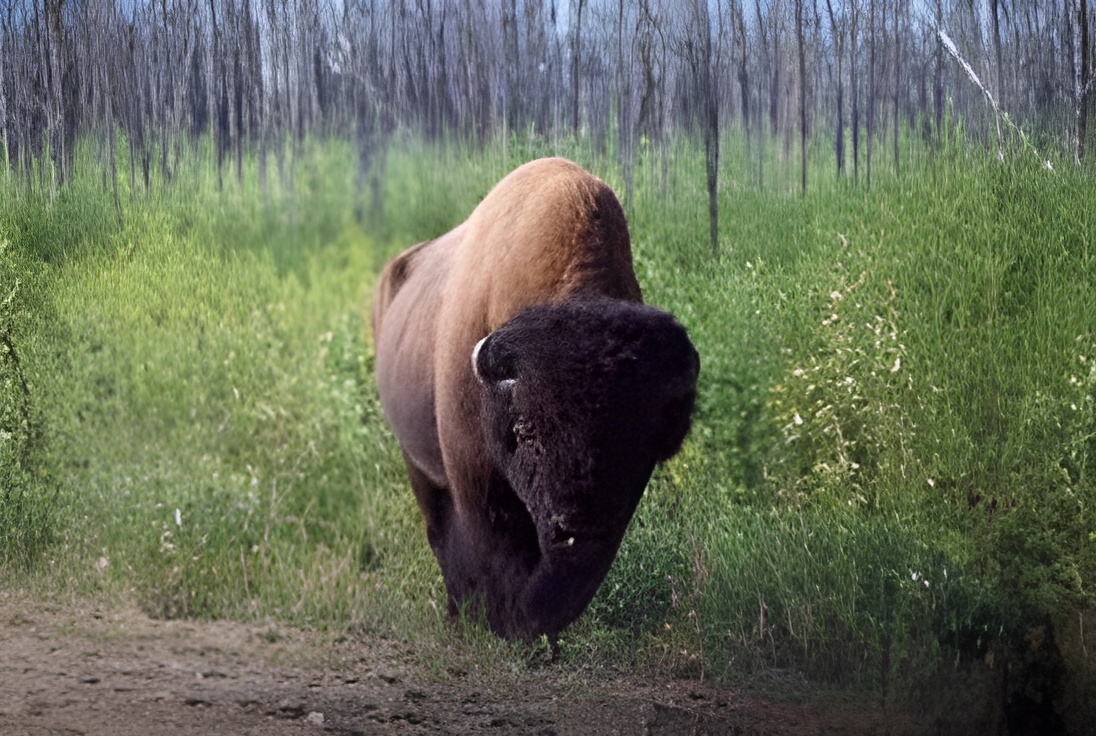
- Be self-sufficient: Cell service is spotty. Bring maps, food, fuel, and emergency gear.
- Watch for wildlife: Always give animals space and never feed them.
- Respect Indigenous lands: Follow local customs and leave sites undisturbed.
- Pack smart: Bring bear spray, insect repellent, and layered clothing.
Check in at the visitor centre: Get up-to-date info on weather, road closures, and trail conditions.
Final Thoughts: A Once-in-a-Lifetime Journey
Wood Buffalo National Park isn’t just a place to visit—it’s a place to experience. Its massive scale, deep silence, and wild spirit offer a kind of travel that’s rare in today’s world. From ancient salt plains to glowing night skies, the park gives you time, space, and perspective. Whether you’re a solo adventurer or a nature-loving family, a trip to Wood Buffalo promises unforgettable memories and a deeper connection to the Earth.

